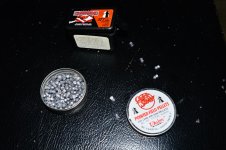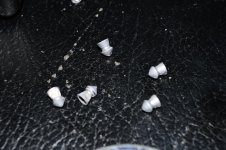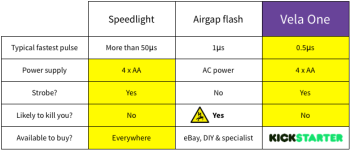WhiteLight
Senior Member
Capture bullets in flight with the first safe, affordable high-speed camera flash.
Your flash is too slow
High speed photography relies on a fast flash. Just like shutter speed with action photography, it's the duration of the flash that is important when capturing bullets and explosions. A typical speedlight has a duration of around 1/20,000 second (50 microseconds) on its fastest setting. This may sound fast, but a bullet will travel over 5cm or two inches in that time and will be so blurred it's almost invisible. Studio flashes are even slower. For pin-sharp shots you need a much faster flash, and the Vela One is 100 times faster. With a flash speed starting at 1/2,000,000 second, or 500 nanoseconds, the Vela One will stop a supersonic, high velocity rifle bullet in its tracks.
[video]https://d2pq0u4uni88oo.cloudfront.net/projects/1330259/video-467808-h264_high.mp4[/video]

It's definitely seedless now.
High speed photography today
We've all seen the beautiful high speed shots of bullets passing through playing cards and apples. If you want to take these sort of photos today, you will either need a high speed camera costing tens of thousands of dollars, or a dangerous and expensive air gap flash. These use a high voltage spark to generate the short, bright flash needed. As they run at over 25,000 volts and need regular and dangerous electrode replacement, it's not surprising you can't buy them commercially. If you want one you either need to buy a vintage one for thousands of dollars, or you must build one yourself. Many super talented people have done this, but it's not an option for most of us. We wanted to solve this.
Passata di pomodoro

MORE & Source - https://www.kickstarter.com/projects/vela/vela-one-the-worlds-first-high-speed-led-flash



